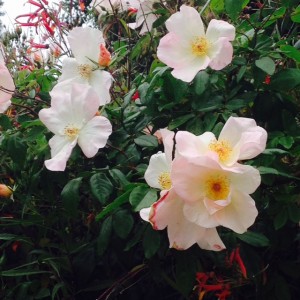 The goal in Ayurveda is to maintain our prakruti, or our inborn physiological constitution. This is the amount of Vata, Pitta, and Kapha doshas with which we were born. Yet, we all are prone to doshic imbalances due to both internal and external stressors.
The goal in Ayurveda is to maintain our prakruti, or our inborn physiological constitution. This is the amount of Vata, Pitta, and Kapha doshas with which we were born. Yet, we all are prone to doshic imbalances due to both internal and external stressors.
Doshic imbalances in Ayurveda are due to a variety of factors: genetics, stress, repressed emotions, prior illnesses, vitiated agni, ama (toxins), eating contrary to one’s doshic needs, bad food combining, improper lifestyle, weak tissue systems, clogged channels, etc. Some imbalance, or vikruti is bound to happen.
The question with doshic imbalances is how severe is it? A little is no big deal, but if it builds up over time, then it becomes a greater issue. If it is just an imbalance in the qualities (gunas) of the doshas, then it is known as dosha dusthti. For example, it can mean a little extra dryness for Vata or a little extra heat for Pitta or a little weight gain for Kapha. But, this vitiation does not present itself in the pulse to a trained Ayurvedic specialist.
 Doshic imbalances can be either increased (vruddhi) or decreased (kshaya) in Ayurveda. When the amount of Vata or Pitta or Kapha in the body is increased or decreased by quantity, then that is known as vruddhi or kshaya. It is possible to have both dosha vruddhi and kshaya simultaneously.
Doshic imbalances can be either increased (vruddhi) or decreased (kshaya) in Ayurveda. When the amount of Vata or Pitta or Kapha in the body is increased or decreased by quantity, then that is known as vruddhi or kshaya. It is possible to have both dosha vruddhi and kshaya simultaneously.
When there is Vata vruddhi, some symptoms include osteoporosis, tremors, long-term insomnia, tinnitus, palpitations, extreme insecurity, ongoing anxiety, dizziness, mobile pain, and very dry, rough skin. The primary location of Vata is in the colon so there can be chronic constipation or a descended colon with vata vruddhi. In more extreme situations of doshic imbalances, there can paralysis, convulsions or epilepsy.
Vata kshaya can create more serious conditions such as shock, bodily trauma, or even a coma. There can be extreme fatigue or lethargy or long-term Vata type depression.
With Pitta vruddhi, there can be vomiting, diarrhea, long term fevers, extreme sweating, anger, hate, envy, jealousy, jaundice, sharp pain, and hypersensitivity to light. Excessive thirst, burning sensations, heartburn, hemorrhage, and conjunctivitis are also signs of doshic imbalances with Pitta.
In Pitta kshaya, the person may experience hypothermia, dehydration, loss of the sense of smell, very low agni, or extreme lack of luster in the skin.
 With doshic imbalances of Kapha vruddhi, there can be excessive sleep, nausea, obesity, swelling, or pneumonia. It can also manifest as excess coughing with expectoration, dull pain, cysts, fibroids, attachment, greed, possessiveness, and an extremely sedentary lifestyle.
With doshic imbalances of Kapha vruddhi, there can be excessive sleep, nausea, obesity, swelling, or pneumonia. It can also manifest as excess coughing with expectoration, dull pain, cysts, fibroids, attachment, greed, possessiveness, and an extremely sedentary lifestyle.
With Kapha kshaya, there can be anorexia, breathlessness, very dry mouth, severe dehydration, adhesions, or a hernia.
Ayurveda offers herbal supplements for warming up Vata, cooling supplements for Pitta, and agni kindling supplements for detoxifying Kapha. There are also Ayurvedic herbal oils for abhyanga or self-massage that ground Vata dosha, calm aggravated Pitta dosha, and stimulate stagnant Kapha dosha.
As you can see, doshic imbalances can range from mild to quite severe. They can be prevented through proper diet, lifestyle and herbs, according to your own doshic needs. A personalized Ayurvedic consultation will set you on the path to health.